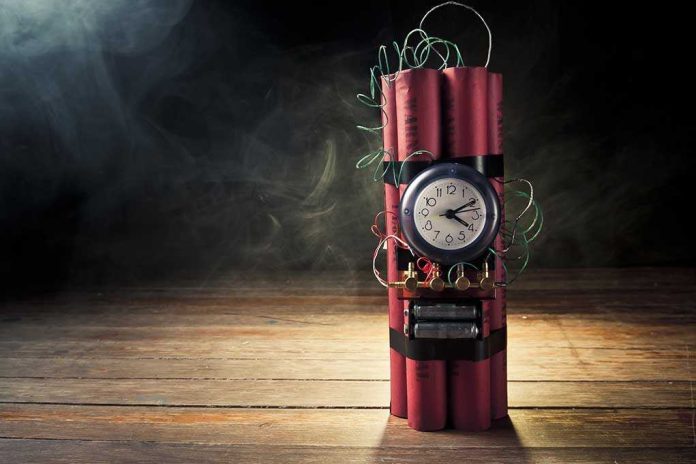
One anonymous tip, a state capitol in chaos, and the kind of threat that makes you wonder: is any place truly immune from danger?
Story Snapshot
- The Wyoming Capitol was evacuated following a report of a suspected explosive device.
- Authorities responded swiftly, emphasizing the serious nature of the threat.
- No device was immediately found, but the event exposed gaps in current security procedures.
- Public anxiety and political fallout followed, raising questions about preparedness and safety.
Wyoming’s Seat of Power Brought to a Standstill
Wyoming’s state capitol in Cheyenne, a building known for its measured calm and legislative routine, was abruptly emptied on a Tuesday after authorities received a chilling report: a suspected improvised explosive device somewhere within its historic walls. Law enforcement and emergency services converged on the scene, sealing off the building and evacuating public officials, staff, and visitors in a matter of minutes. The streets around the capitol filled not with the usual hum of government business, but with flashing lights and cautious anticipation.
The speed and seriousness of the evacuation stunned even longtime state employees. For many, this was a first—a reminder that even institutions rooted in American tradition are not exempt from modern security threats. The evacuation, while executed with discipline, had the air of a drill turned real, with officials hustled out, some leaving behind personal belongings and unfinished work, their faces a mix of concern and disbelief. The scene outside was tense, as news spread quickly through social media and local news outlets, stoking public anxiety and speculation.
Authorities Mobilize, Uncertainty Lingers
Law enforcement teams swept the building, deploying bomb-sniffing dogs and specialized equipment. The suspected device was never found, and after hours of searching, officials declared the building safe. Yet the absence of a physical threat did little to dispel the sense of vulnerability left in its wake. The all-clear was met with relief, but also with the sober realization that the potential for disruption remains very real. Authorities have not released details about the source of the threat, citing an ongoing investigation, but the response made clear that law enforcement treats every report with utmost gravity.
Questions swirled about the nature of the tip that triggered the evacuation. Was it a credible threat, a malicious prank, or a test of the system’s readiness? The ambiguity fueled speculation and debate across the state, with some calling for increased transparency and others warning against panic. Local officials and law enforcement faced a delicate balance: ensuring public safety without stoking unnecessary fear or providing a blueprint for future disruptions.
Security, Trust, and the Modern Threat Matrix
The Wyoming Capitol evacuation underscored a broader issue facing American institutions: how to protect public spaces without sacrificing accessibility and openness. In the wake of this incident, lawmakers and security experts began reexamining protocols, scrutinizing everything from entry screening procedures to communication plans in the event of emergencies. The event exposed vulnerabilities not just in physical security, but also in crisis messaging and public trust.
Public reaction ranged from gratitude for the swift response to frustration over the disruption and lack of immediate answers. Some state officials urged caution, emphasizing that overreacting to threats could paralyze government functions and erode public confidence. Others, mindful of global trends, argued that vigilance is non-negotiable in an era where threats—real or hoaxed—can come from anywhere, at any time. The debate touches a nerve in American conservative circles: the tension between security and liberty, between necessary caution and the resilience that defines a free society.
Political Fallout and the Path Forward
The evacuation’s aftermath rippled through Wyoming’s political circles. Lawmakers took to the airwaves and social media, some calling for a comprehensive review of security practices, others pointing out that the state’s tradition of open government must not become a casualty of fear. The event has already prompted discussions about emergency preparedness, the adequacy of response protocols, and the need to ensure that the public remains both safe and informed.
As the investigation continues, the Wyoming Capitol stands as a symbol—of both vulnerability and response. The day’s events reminded everyone that even the most stable institutions can be shaken by the specter of danger, and that the true test lies not just in how quickly a building can be emptied, but in how well a society can balance vigilance, transparency, and the enduring values of open government.
Sources:
Device delivered to Wyoming Capitol found to be deconstructed firework, DCI says



